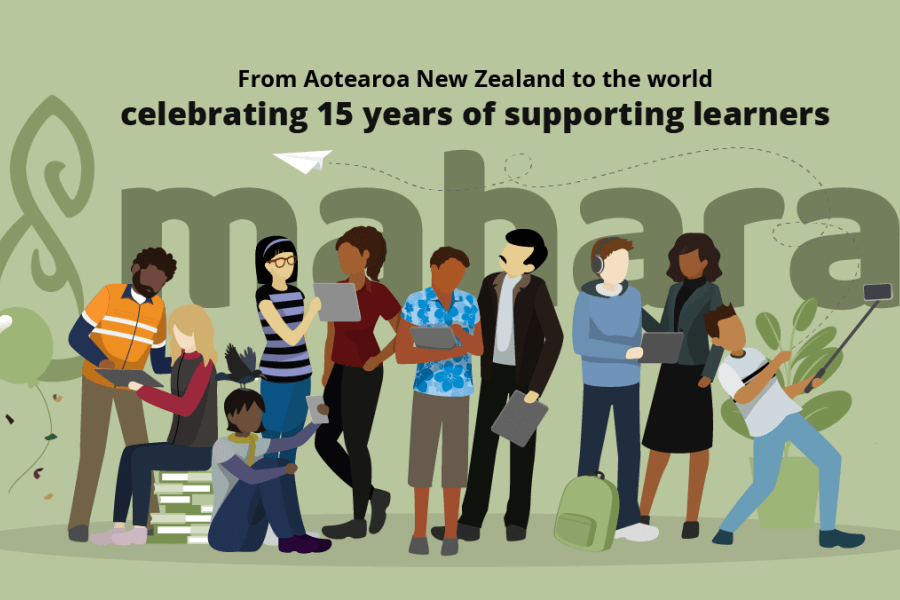Building a bridge – PLE and integration with other tools for assessment
Fifteen years ago, the Mahara project initiators had the idea to create an ePortfolio application to support people in their lifelong learning journey. It was to work for students, teachers, and professionals in the workplace. That required flexibility and also handing the controls to the learner to decide with whom they wanted to share their learning evidence and to what extent. Mahara is often contrasted to learning management systems (LMS) stating that the LMS is ‘theirs’, meaning the teacher’s and the institution’s, whereas Mahara is ‘yours’, meaning the learner’s personal learning environment (PLE), where they have the decision power.
This idea of an ePortfolio as a PLE still holds true today for many uses of Mahara. Ultimately, it is the learner’s choice with whom they want to share a specific portfolio. They can also create many different portfolios and tailor them to their audiences. That is also where the strength of Mahara lies: It can be used for many different types of portfolios. Learners can showcase their achievements and summarise their learning and at the same time can also demonstrate their learning journey with critical reflections on their development.
When portfolios became more established at school and tertiary education, it became clear that some form of assessment would be beneficial so that educators could stay with Mahara as portfolio platform and fulfil institutional requirements for students to receive grades. Therefore, offering integration possibilities with learning management systems was important. At the time, Moodle was the preferred LMS for many organisations and being open source, it followed open protocols that Mahara could also work with. From an early age, ‘Mahoodle’, the integration of Mahara and Moodle, became popular at many organisations because students could click a link in Moodle and be taken directly into their portfolio area without then complicated external single sign-on or an additional login. Furthermore, a plugin for Moodle allowed the submission of portfolios as assignment evidence into Moodle, providing teachers with the possibility to use their regular grading methods to assess student work.
Over the years, more assessment features were implemented in Mahara to make the application more versatile to use and also to provide much needed support for learners who often had never worked with portfolios before and appreciated a guiding hand. That means that templates can be created in Mahara that students can copy into their own account and add their content or modify them away from the base structure.
Four years ago, the Catalyst team focused on the implementation of Learning Tools Interoperability (LTI). This opened up a number of additional opportunities to connect to different LMS that support this technology standard for connecting LMS to external applications. Now it’s easier than ever to use any LMS that supports LTI and connect it with Mahara for easy authentication and portfolio assignment submission. This integration is crucial for a vast number of organisations using Mahara because it makes the process of gathering student work, submitting it for assessment, and keeping a record for the institution easy.
Even when students create portfolios for assessment purposes, they have the freedom to inject their personalities into their portfolios, which brings us back to the fundamental principles that were established at the start of the Mahara project where the learner is in control. I like to call a portfolio template an invitation. Learners can still influence what the end product shall look like. If you think about a house, a portfolio template is not a turnkey property where you just bring your furniture and clothes, it is a house in an unfinished state. You have the foundation, the roof, the walls, and the windows, but you can decide whether to have an open plan kitchen or a closed one, what wallpaper you want to put into your living room, what flooring options to use, what the outside cladding shall be, and what your garden is to look like. You could even still decide on the room size.
Leaving it up to the learners to decide what learning evidence they want to share and how they want to share it means learners can harness digital technologies to be creative in their expression. Be that in the written word, as illustration or photo collage, or audio or video recording, speaking their reflections and thoughts on what they learned from the experience. Using an electronic portfolio such as Mahara, learners can upload that learning evidence into their portfolio or even just link to it if it already lives online. Giving learners that freedom of expression also invites them to share as much or as little of themselves in ways that they are comfortable with and happy to share in, supporting inclusive teaching practices.
In a presentation a few years ago, when templates had already been successfully employed in our part of the world: the Pacific region, they were not yet so wide spread in the Northern hemisphere, which made for an interesting start to my presentation at the second Mahara Hui in 2015 when the presenter before me said they didn’t like using templates. It was only a short time later though that our friends in the Northern Hemisphere started using templates themselves and realised the benefits for learners. Watch the original presentation on scaffolding portfolios through the use of templates for that bit of Mahara history.
A 28 minute video
Read the second and third blog posts in the series of Mahara history
